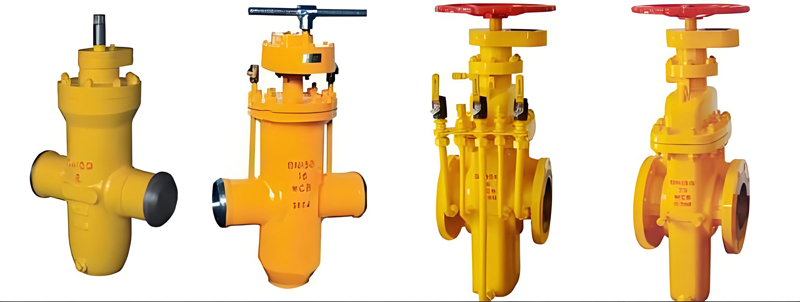There are many types of gas valves, which can be divided according to different classification methods. The following are some of the main types of gas valves:
Classification by action mode
Automatic Valve
A valve that acts automatically by relying on the ability of the gas itself. For example:
- Check valve: Used to automatically prevent gas backflow in the pipeline.
- Regulating valve: Used to adjust the flow of pipeline gas.
- Pressure reducing valve: Used to automatically reduce the gas pressure in pipelines and equipment.
Valves with Actuator
A valve that is manipulated by manual, electric, pneumatic, etc. For example:
- Gate valve: Controls gas flow by lifting or lowering a gate, suitable for systems that need to be fully opened or closed.
- Globe valve: Used to open or close the gas flow of the pipeline.
- Throttle valve: Used to adjust the flow of pipeline gas (note the difference from the regulating valve, the throttle valve focuses more on specific flow control).
- Butterfly valve: Controls gas flow by rotating a disc, usually used in systems with larger pipe diameters.
- Ball valve: A rotary valve that controls the flow of gas by rotating a ball with a hole. It has a fast opening and closing speed and good sealing.
- Plug valve: The closing part is a plunger or a ball, which rotates around its own center line and is used to open or close the gas flow in the pipeline.
Classification by function
- On Off Valve: Used to connect or cut off pipeline gas, such as stop valve, gate valve, ball valve, butterfly valve, etc.
- Check valve: Used to prevent gas backflow, such as check valve.
- Regulating valve: Used to adjust the pressure and flow of gas, such as regulating valve and pressure reducing valve.
- Distribution valve: Used to change the flow direction of gas and distribute gas, such as three-way plug, distribution valve, slide valve, etc.
Classification by connection method
- Flange connection valve: The valve body has a flange and is connected to the pipeline by a flange.
- Threaded valve: The valve body has internal or external threads, and is connected to the pipeline by threads.
- Welded valve: The valve body has a weld, and is connected to the pipeline by welding.
- Clamp-connected valve: The valve body has a clamp, and is connected to the pipeline by a clamp.
- Sleeve-connected valve: It is connected to the pipeline by a sleeve.
Classification by specific application scenarios
- Public Gas Valve: Also known as the valve on the gas main pipeline, it is used to control the gas of all households from top to bottom in the entire unit building, and is mainly used for the maintenance and repair of the gas pipeline system.
- Valve before the meter: After entering the resident’s room, a valve in front of the gas meter is the main switch that controls the user’s indoor gas pipeline and equipment.
- Valve before the equipment: Mainly used to control the use of gas equipment such as gas stoves and gas water heaters, which can be specifically divided into valves before stoves and valves before water heaters.
- Pipeline gas self-closing valve: Generally installed at the end of the gas pipeline, it is a safety barrier in front of the hose and stove, and usually comes with a manual valve. In the event of gas outage, abnormal gas supply, hose detachment, etc., the self-closing valve will automatically close to prevent gas leakage.
- Gas stove valve: The gas valve that users use most frequently in daily life can only be ventilated and ignited by opening the gas stove valve.
In summary
There are many types of gas valves, and the selection needs to be comprehensively considered based on specific usage scenarios, functional requirements, safety standards and other factors.
Post time: Feb-09-2025







